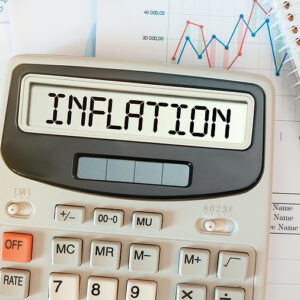As is common for today’s politicians, White House Chief of Staff Ron Klain has a habit of using Twitter to advance the Biden agenda. It’s not uncommon for Klain to retweet dozens of tweets per day – often from like-minded opinion columnists at outlets like The New York Times or The Washington Post.
Last week, amid mounting economic data illustrating the growing severity of inflation across critical sectors of the U.S. economy, Klain took to Twitter to endorse a painfully poor take from former Obama administration economist Jason Furman downplaying the seriousness of the challenges facing working Americans by referring to inflation as a “high-class problem.”
Put another way, most Americans simply don’t care or don’t closely monitor day-to-day price fluctuations in consumer goods. Americans either don’t worry about inflation because they can afford to pay higher prices or – at the risk of being too blunt – they aren’t savvy enough to realize prices are going up. And in any case, they say, the only reason prices are so high is because the economy is so good.
With the consumer price index rising 5.4 percent in September – the biggest increase since 2008 – I’m sure the administration will forgive me if I’m not jumping up and down in celebration.
Like so many of the steps taken in recent weeks by the Biden administration, the tweet was a political disaster and a PR nightmare. But the idea that such a tone-deaf blunder could be made by such a high-ranking official isn’t what’s most concerning. What’s concerning is the fact that, in the eyes of this administration, it wasn’t a blunder at all.
Klain wasn’t speaking out of turn. He was towing the company line. And in doing so, he was also showing just how disconnected this White House is from the day-to-day concerns of Americans. Because make no mistake: to the working mom living paycheck to paycheck, inflation is anything but a high-class problem.
When she stops to fill up, she’ll certainly notice the fact that gas prices are higher. At an average of almost $3.30 per gallon, gas prices are higher than they’ve been since September 2014. With OPEC squeezing global supply and the American oil and gas sector facing continued pressure from the administration, there’s little reason to hope for immediate reprieve.
If she decides to treat the family to carry out, she’ll surely be aware of the fact that prices at restaurants are creeping higher every day, too. If she’d rather save some money and make dinner at home instead, she’ll get a good look at inflation when she pays more for groceries thanks to worker shortages, supply chain disruptions, and more. According to The Washington Post, meat, poultry, fish, and eggs are up 5.9 percent over last year, and up 15.7 percent from prices in August 2019, before the pandemic.
She’ll surely notice higher prices for rent. Average tenant rent jumped by 0.5 percent from August to September. Assuming an average rent payment of $1,000 per month – likely conservative in most communities – that’s $50 less in the monthly budget to pay for those pricier groceries, fill-ups, and more.
The list of products facing inflationary pressures is long and growing – from new cars and furniture to building supplies and even consumer goods like jeans and soda. Most prognosticators suggest the trajectory isn’t going to improve any time soon. And if the White House doesn’t even accept that it’s a problem? Well, there’s next to no chance they’ll do much to help matters.
One thing is certain: if you asked this single mom if these felt like “high-class” problems, she’d have a very clear, very declarative answer for you.

